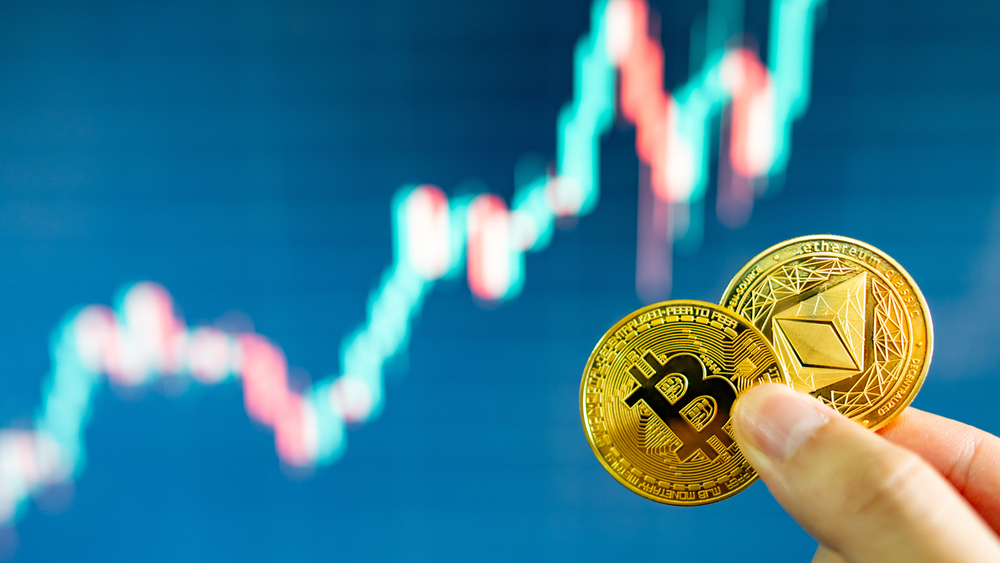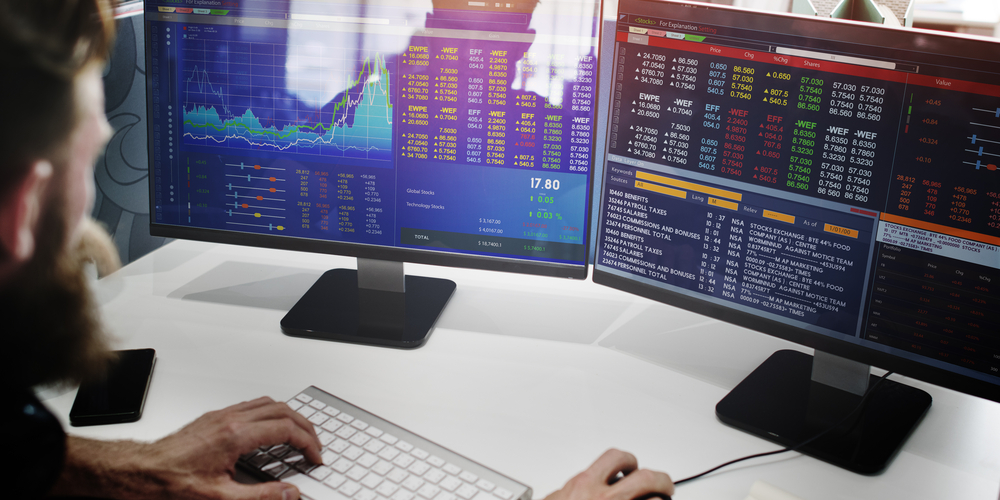Introduction
It gets a bit strange to contemplate the true meaning of various financial terms, especially when they are referring to different aspects of differentiated market systems. For example, the definition of GDP or gross domestic product for a certain product is the same in every financial plane.
But the effect it has on understanding the significance of the product that it is representing in the first place finds inspiration from the very financial market that it finds itself in.
The same is true for market capitalization; it denotes the total financial value of a certain asset in a dedicated financial plane. In terms of the forex market, it represents the total value of all the dollars or pounds or euros in the world.
But in correspondence with the stock market, it represents the total value of all the S&P 500-backed stocks, but in the crypto market, it represents the total value of all the coins present out there. The definition remains the same, but the product it is representing gets changed in correspondence with the market that is being targeted.
One can find the market capitalization of a certain asset, may it be a crypto token, a stock, or a forex entity, by multiplying the total number of stocks of an entity, total forex elements, or total crypto coins by the price of a single entity.
Market Cap of Cryptocurrencies
One assumption that is necessarily tied with market capitalization when it comes to cryptocurrencies is that the measurement of the market cap of a certain crypto can provide a vague idea regarding how successful that certain crypto is likely to be in the future.
But this assumption kind of nullifies itself when taking into account the market cap of Bitcoin, the largest crypto asset there is, and the notion that it experiences the most turbulent volatility there is.
It definitely proves that just because an asset has a higher market cap doesn’t necessarily mean that it is going to be a raving success or even remain stable in the long run. But the myth is nonetheless persistent within the crypto market, and in the same fashion, the cryptocurrencies with a low market cap or those that are fairly new propose a higher risk assessment to the investors.
It means that these fairly new cryptocurrencies could barge in with either significant returns over the original investment or heavily ingrained losses, whichever comes first.
Circulating Supply vs Fully Diluted Supply Market Cap
These are the terms that are associated with a lot of different cryptocurrencies out there that don’t have an unlimited token supply. In the case of Bitcoin, it means that out of 21 million total Bitcoin tokens that have been programmed into the blockchain, which corresponds to the fully diluted supply of the token, only 18.5 million tokens have been mined until now, which is the circulating supply.
The market cap for both these different supplies is also going to be different and is going to affect the decisions as well as paradigms that investors or analysts stick with when making investment-oriented decisions.
Most of the time, the diluted supply market cap is taken as a standard value to determine the actual performance of a particular entity, while some stick with the circulating supply only to determine the market cap value.
Significance of Market Capitalization
You can surely use the price alone to determine the present attributed about a dedicated cryptocurrency or a financial entity for sure, but with the market cap, you are getting a whole and more vivid picture of every possible account. It allows investors to complete tons of different values across the board for certain cryptocurrencies out there.
It helps to determine not only the present inclination of a particular cryptocurrency, such as if it is appreciating or depreciating in value but also unveils many other characteristics associated with it, such as the future growth potential window.
It doesn’t always portray the exact value but the estimates made are within 80-90% of the actual growth percentile, and that is pretty elementary.
Not only does it provide a decent attribution of the cryptocurrency in general, but it also helps to estimate the risk factor, such as how potent it is and should the investor be worried.
The value of the tokens, such as in terms of price, has little role to play in bringing out the total market cap for a dedicated cryptocurrency, but it is the total number of tokens out there that matter the most.
Market Cap Helps in Determining the True Potential of a Cryptocurrency
As you have made up your mind that you want to jump onto the investment bandwagon of the crypto market and want to put down your investment, there is something that you should know in advance.
The crypto market is the most volatile financial market out there. It means that the bullish and bearish trends are extremely swift and influencing at the same time.
You might see a dedicated cryptocurrency such as Bitcoin making good tides for a certain period of time and think that the crypto is presently bullish and the data set of the coin is also establishing a solid forecast, is this the time to make an investment?
Sadly enough, when you put down your money and start to wait for the better days to come, the crypto market takes a step backward, the bearish run dominates Bitcoin, and your investment has been lost by a factor of 65%.
This is not a pretty sight for any investor out there, which is why making an investment decision based on the fact that the present price metrics are stable and not taking the market cap of certain crypto into account is going to leave you in a tight spot.
Market cap is used more often than not by investors out there to determine the true potential of a dedicated cryptocurrency and finally put down your money. A higher market cap for an asset usually translates into the fact that an investor has made up their mind and is willing to take the risk of investing in crypto that offers a higher market cap.
Crypto Scarcity vs Market Cap
Some investors out there are fond of the idea that if crypto is limited in its action, meaning that if it has a limited token supply, then it gets classified as a scarce entity. Hence not only does it have a higher chance of great banking returns on the original investment but offering sustainable growth in the future as well. This is where most of these investors are actually wrong.
The scarcity of crypto only tells that the asset is limited in number, but it doesn’t tell how incredible of an asset that crypto is. Does it have higher liquidity? Are people genuinely interested in that specific crypto or not? What about its market cap?
These are the questions that any investors trying to work their way up in the crypto market should really be asking when making an investment decision regarding a particular cryptocurrency.
Bitcoin is also a scarce entity, only having a 21 million token supply. But at the same time, it has the highest possible market cap, is extremely cherished as an investment tool among the crypto community, and has a pretty solid liquidity rate.
Another crypto token, in comparison that has a very low market cap, has limited liquidity potential, and is not that famous among investors doesn’t actually translate into big bucks.
Types of Cryptocurrencies Based on Market Cap
The utmost importance of knowing the market cap of a dedicated cryptocurrency is that so you can compare it with another and choose between the two for investment as a priority. There are usually three different categories based on which these cryptocurrencies are based, and these are as follows;
Large-cap Cryptocurrencies
These have Bitcoin and Ether as the raging bulls, and collectively these have a market cap of more than $10 billion.
Many investors out there rely heavily on these cryptocurrencies, and they don’t succumb to various analytical approaches trying to break down the profit/loss ratio as these are considered harmless and have a very small risk margin. But that doesn’t mean that these are perfectly immune from the tides of crippling volatility.
In fact, Bitcoin has endured severe volatility that has not allowed it to catch up with the price slashes all the way from $67K to lower $20K and dropping.
Other than that, these cryptocurrencies also do have higher liquidity which means that if an order influx is presented where too many people want to either buy these cryptocurrencies or cash out a ton of these, then these would not be affected in any sense of the word.
In other words, even if there was a major cash out for these cryptocurrencies, these won’t be impacted much, and their price should remain pretty optimistic.
Mid-cap Cryptocurrencies
These are the cryptocurrencies that usually have a market cap between the $1 billion to $10 billion range. These cryptocurrencies are considered to pack a bigger punch as they are fairly new in the market, and these are eager to prove their mettle.
But at the same time, the market volatility that affects them is also huge, which means that in the eyes of the investors, these cryptocurrencies are fairly high risk.
Small Cap Cryptocurrencies
Now, these are the cryptocurrencies that are the underweight of the bunch, and these have a market cap that is less than $1 billion and therefore are called small-cap cryptocurrencies.
These cryptocurrencies get the price axe more often than not and are considered to be very high risk with fewer liquidity options and therefore are not a priority of the consistent crypto investors as they have their eyes on other high-end investment opportunities than these.
Now you must be thinking that you have all this new information on the market cap and how it affects the price as well as other differentiated movements of different cryptocurrencies out there so that you can make an investment decision.
But that is not what should be done. Market cap will only provide you with a tool that can help in comparing different cryptocurrencies, and that is about it. When it comes to making an investment decision, other elements of the crypto that you are bent on investing in should be considered.
These are the stability of the cryptocurrencies, the present financial situation of the investor, the current market trend that is persistent with the crypto, such as whether it is bullish or bearish at the moment, and other important market markers that need to be taken into account before making a final decision.
Comparing the Value of Cryptocurrencies Using Market Cap
The market cap of a dedicated cryptocurrency is going to fluctuate based on the present price trend for that specific cryptocurrency. Hence it won’t be ideal to just consider market cap for the sake of making investment decisions. It is important to have even the most last-minute information for the sake of investing in a particular asset.
Many crypto exchanges and aggregators out there are going to provide you with the most recent and up-to-date information regarding the market cap as well as the present circulating supply for that crypto.
Therefore it does become a bit easier when it comes to making a final decision about whether or not you want to buy that crypto or not.
Investors out there have their own way of assessing various market trends of these cryptocurrencies when it comes to making an investment decision, but there are tons of resources available on the internet, and these should be taken into account for a more informed decision.
On the other hand, many sophisticated investors out there are happy with simply taking market cap as the ultimate trend for the sake of choosing to invest in a cryptocurrency.
Weighted Market Cap Strategy
This is an incredible way of allocating your funds to different cryptocurrencies at the same time having a different market cap. This is so that you can adjust for the inflation and the ripping market volatility for these cryptocurrencies.
What weighted market cap strategy suggests that you determine the market cap of different cryptocurrencies in percentage and then, based on that percentage, allocate your money accordingly.
For the sake of discussion, if one crypto had a market cap of 70% and the other one was at 30%, then you could allocate 70% of your decided investment money into crypto A and 30% into crypto B.
The weighted market cap strategy is a product of the centralized world of finance, but its applications are extremely beneficial even in the decentralized world. It allows investors to target cryptocurrencies that do have the highest possible market cap, thus increasing your chances at success.
Some investors are pretty biased when it comes to the weighted market cap strategy saying that these tactics don’t work as well in the crypto regime as these do in the centralized world, but others do engage with this strategy to boost the final return on their investment.
What Factors Affect a Market Cap?
Supply and price of a dedicated asset are two of the most discerning factors that have a pretty significant effect on their market cap. If the price of an asset is increasing at a steady rate then it will add to the present market cap of that specific asset and it will grow.
But at the same time when the supply is getting limited, the market cap is increasing still. Price is directly proportional to the market cap of an asset whereas the circulating supply is inversely proportional to the market cap of an asset.
Both the price and supply do play their part in determining the most recent market cap of an asset. The circulating supply of an asset is a more viable thing to consider when it comes to determining its market cap and making an investment decision as opposed to the price of the same asset.
This is because the price of the asset could skyrocket momentarily flying over the shoulders of a swift bullish run while plummeting pretty strongly when the bearish run approaches the asset. Therefore the price is not considered an extremely viable element for the sake of determining the market cap of an asset as opposed to its circulating supply.
Conclusion
Market cap is a phenomenal tool when it comes to determining the performance of a certain asset within the crypto market. But it is important to have the most recent data because when you are going to make an investment, it is going to be executed on the most recent market data.









